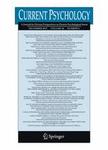版权所有:内蒙古大学图书馆 技术提供:维普资讯• 智图
内蒙古自治区呼和浩特市赛罕区大学西街235号 邮编: 010021

作者机构:Necmettin Erbakan Univ Eregli Fac Educ Dept Educ Sci Konya Turkiye Izmir Katip Celebi Univ Dept Comp Engn Izmir Turkiye
出 版 物:《CURRENT PSYCHOLOGY》 (Curr. Psychol.)
年 卷 期:2024年第43卷第28期
页 面:23656-23674页
核心收录:
学科分类:0402[教育学-心理学(可授教育学、理学学位)] 04[教育学]
基 金:Necmettin Erbakan University
主 题:Chatbot technology UTAUT2 Educational chatbot usage Usage intensity PLS-SEM Machine learning algorithms
摘 要:Adopting innovations in educational practice is a challenging task. In order to promote the use of technological innovations, acceptance of the technology by potential users is a prerequisite. Indeed, understanding the various factors that influence technology acceptance is critical for technology acceptance research. The use and acceptance of chatbots in education as a technological innovation is a topic that needs to be investigated. Chatbots, which offer close to human interaction between the user and technology through text and voice, can provide significant benefits in educational environments. The UTAUT2 model (extending UTAUT), which is widely used to evaluate technology acceptance, can serve as a framework for evaluating the acceptance and use of chatbots. This study aims to predict factors influencing students use of chatbots in education within the UTAUT2 framework. PLS-SEM and machine learning tested the model, involving 926 students. According to the findings of the study, behavioral intentions were influenced by various factors including performance expectations and attitudes. Facilitating conditions and intentions significantly impacted chatbot usage time. Moderator effects were observed with age, gender, and usage experience affecting behavioral intentions. Support vector machine and logistic regression showed high prediction accuracies for behavioral intentions and usage time, respectively. These results provide insights for chatbot designers to meet user needs in educational settings.